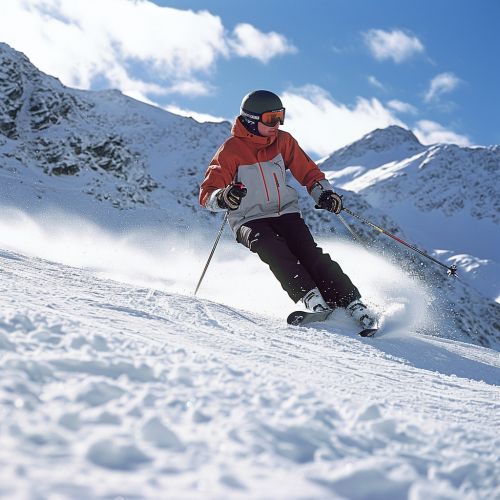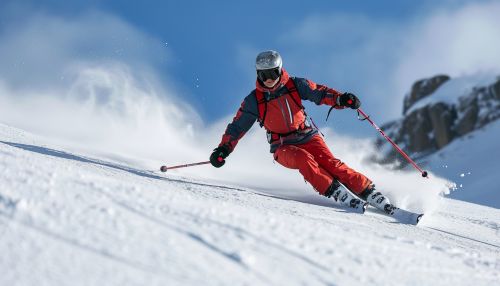Alpine skiing
Overview
Alpine skiing, also known as downhill skiing, is a popular winter sport that involves sliding down snow-covered slopes on skis with fixed-heel bindings. It is typically practiced at ski resorts which provide services such as ski lifts, artificial snow making, snow grooming, restaurants, and ski patrol.
History
Alpine skiing evolved from the older Nordic skiing around the turn of the 20th century, when the advent of the ski lift allowed skiers to return uphill more easily. The sport gained in popularity during the mid-20th century, when it became an Olympic sport, and continued to grow through the 20th century with advancements in ski technology and the spread of the use of ski lifts.
Equipment
The equipment used in alpine skiing includes skis, bindings, boots, poles, helmets, and ski suits. Skis are typically made from a combination of various materials including wood, fiberglass, and metal, and have a curved shape which helps the skier turn. Bindings are used to connect the skis to the ski boots, and are designed to release in the event of a fall to prevent injury. Boots are typically made from plastic and are designed to provide support and transmit control inputs from the skier to the skis. Poles are used for balance and propulsion, and helmets and ski suits are used for protection from the elements and injuries.
Techniques
There are various techniques used in alpine skiing, such as the parallel turn, the carved turn, the slide-slip, the hockey stop, and the jump. The parallel turn involves the skier turning both skis in the same direction at the same time, while the carved turn involves the skier leaning into the turn and using the edges of the skis to carve a path through the snow. The slide-slip involves the skier sliding sideways down the slope, and the hockey stop involves the skier stopping quickly by turning the skis perpendicular to the slope and applying pressure to the edges. The jump involves the skier jumping off the ground, often over obstacles.
Disciplines
Alpine skiing is divided into several disciplines, including slalom, giant slalom, super-G, downhill, and combined. Slalom involves skiing between poles or gates, which are spaced closely together to require quick and short turns. Giant slalom involves skiing between gates that are spaced further apart, requiring larger and faster turns. Super-G is a speed discipline like downhill, but with more turns and therefore a slightly slower speed. Downhill is the fastest discipline, with speeds up to 130 km/h (81 mph) and jumps up to 30 m (98 ft). Combined involves a run of downhill followed by a run of slalom.
Competitions
Competitive alpine skiing races are governed by the International Ski Federation. The most prestigious competitions are the Winter Olympic Games, the FIS Alpine World Ski Championships, and the FIS Alpine Ski World Cup. Athletes compete in four disciplines: slalom, giant slalom, super-G, and downhill. In each discipline, racers start at intervals and race against the clock, with the fastest time determining the winner.
Safety
Safety in alpine skiing is a significant concern due to the risk of high-speed crashes and the severe injuries they can cause. Skiers are advised to use helmets, to ski within their ability levels, to respect the Skier Responsibility Code, and to be aware of hazards such as trees, rocks, and other skiers.
See Also


